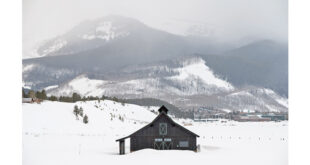For some, it was a week of No. Others will argue it was a week of affirmation for what this end of the valley represents to them… which is apparently… Smallness.
The Forest Service is making it clear that it wants Crested Butte Mountain Resort to remain a relatively small ski area. The appeal over the decision not allowing ski lifts to expand to Snodgrass was turned down. There are other avenues to pursue in an effort to get more lift-served skiing on Snodgrass, and no doubt the resort will certainly follow them. But the tenor of the message coming out of the Forest Service for CBMR is to stay small. The officer looking at the resort’s appeal agreed with the local Forest Supervisor and just said No.
Downtown, the members of the Board of Zoning and Architectural Review (BOZAR) reiterated that the proposed Sixth Street Station was a nice design but it contained two buildings that were too big. Those buildings comprised the condo-hotel aspect of the project. A hotel is something the former council was pushing for and they changed the town code to accommodate that. The BOZAR members indicated they have asked and asked the developers for less mass in those buildings but the architects weren’t listening. The proponents said they felt blindsided and didn’t feel BOZAR indicated the massing of the hotel was a showstopper. Nevertheless, given the context of two 20,000-square-foot buildings in Crested Butte, the board members just said No.
Let’s not even go to the town not letting the Chamber of Commerce put up a banner promoting Restaurant Week (which is being co-sponsored by the CB News) in Crested Butte… at least not yet.
Those opposed to both Sixth Street Station and Snodgrass will contend that the decisions made this past week are actually a Yes to the idea of being a small resort community. It could be argued that the message is for the community to focus on being a second-home resort with some tourism. A gated community, if you will. The valley will still have some of the amenities associated with a ski resort but it will be smaller than, say, a Telluride. Is that sustainable for people wanting to make a life here? I’m sure it is for some.
No matter the direction of the Crested Butte growth model, trustafarians, people whose income arrives in a post office box from corporate dividends or mummies and daddies in a far-away place, don’t need paychecks derived from here. (Full disclosure—I wish I were a trustafarian). Ski bums (like myself in the 1980s) can survive on very little, especially if rents are getting cheaper. Those who bought property in the ’80s or ’90s are probably sitting fine. If you arrive in the valley with money, life is easier. But the young family coming to paradise to pound out a middle class living is going to have a hard time with no more physical growth.
So the question to those in favor of that view is simple: If continued “physical” growth is not the way to go, what is? What is the idea, the path or the plan to bring success to this end of the valley? I’m talking success in terms of the lifestyle, the economy and the environment. How is success defined?
Is there a template that allows people to comfortably earn a living and raise a family here (and that involves real income) without growth? I’ve always been a believer in slower, smarter growth but I am respectfully asking for the successful alternative strategy.
If “physical” growth is not the desire of this community or the Forest Service, does that mean we will have to shrink to fit with the size ski resort that is already up there? Rely on Nordic skiing? Buff out more mountain bike trails? Just accept the demographic of Extreme skiing as a primary draw? Will there be a few more empty spaces downtown or are there businesses that fit into the idea of a “physical” no-growth model that would be workable?
We did just build a big new extension to the school. Was that an error? Crested Butte sales tax revenue is down about 20 percent in the first three months of the year from 2007. That probably reflects businesses, wages and real estate values at the north end of the valley. Should we expect further declines in the new model and a culling of the people trying to live here? Twenty percent down is no minor change. What does the new template mean in the long run?
The trustas, the ski bums, people who bought a house 15 or 20 years ago when prices were significantly cheaper are probably okay even if the place and economy continues to shrink. Is that the new path to success?
The idea that unbridled growth equals success has never been a good equation for Crested Butte, so some No’s really are Yes’s. But the question now is… if we are just saying no to growing, to what are we going to say yes?
 The Crested Butte News Serving the Gunnison Valley since 1999
The Crested Butte News Serving the Gunnison Valley since 1999





